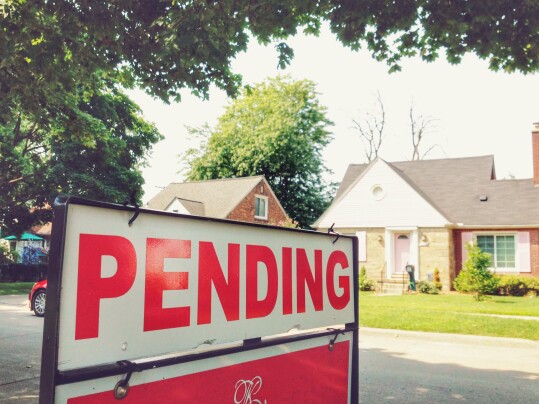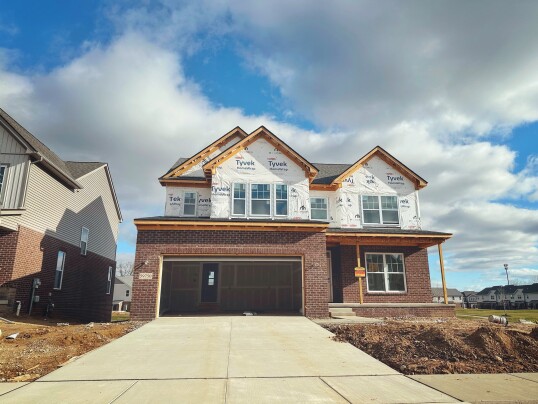After a contract to buy a home is signed, the sale is considered pending until it closes several weeks later. That’s why pending home sales are considered a good indicator of future home sales. It’s also why the National Association of Realtors tracks them from month to month. Since the vast majority of signed contracts lead to final sales, measuring pending sales offers a peek at where home sales are heading. According to the NAR’s most recent Pending Home Sales Index, the market is heading upward. In fact, pending sales were up 1.6 percent in February from the month before. Lawrence Yun, NAR’s chief economist, says it’s a sign the market is improving. “While modest sales growth might not stir excitement, it shows slow and steady progress from the lows of late last year,” Yun said. “Ongoing job gains are clearly increasing demand along with more inventory.” Results show the Midwest leading all regions, with a 10.6 percent jump in contract signings from the month before. The South also rose, with a 1.1 percent increase. The Northeast and West, on the other hand, saw declines. (source)
Archive for March 2024
Contract Signings Edge Upward In February
Average Mortgage Rates Move Lower
According to the Mortgage Bankers Association’s Weekly Applications Survey, average mortgage rates moved lower last week from the week before. Rates were down for 30-year fixed-rate loans with conforming balances, loans backed by the Federal Housing Administration, 15-year fixed-rate loans, and 5/1 ARMs. But while rates dipped, the improvement wasn’t enough to boost demand for mortgage applications, which were mostly flat from one week earlier. Joel Kan, MBA’s vice president and deputy chief economist, says the market is improving but gradually. “Purchase applications were essentially unchanged, as home buyers continue to hold out for lower mortgage rates and more listings to hit the market,” Kan said. “Lower rates should help to free up additional inventory as the lock-in effect is reduced, but we expect that will only take place gradually.” The MBA’s weekly survey has been conducted since 1990 and covers 75 percent of all retail residential mortgage applications. (source)
Forecast Sees Housing Market Thaw Continuing
Each month, Fannie Mae’s Economic and Strategic Research Group releases an outlook covering what they see ahead for the housing market and overall economy. In March, the group says they expect the housing market will continue to thaw after a slow 2023. Home sales will trend higher and so will the number of available listings. The group sees affordability constraints continuing, though, with mortgage rates remaining elevated due to inflation and a strong job market. “Hotter-than-expected inflation data and strong payroll numbers are likely to apply more upward pressure to mortgage rates this year than we’d previously forecast, as markets continue to evolve their expectations of future monetary policy,” Doug Duncan, Fannie Mae’s senior vice president and chief economist, says. “Still, while we don’t expect a dramatic surge in the supply of homes for sale, we do anticipate an increase in the level of market transactions relative to 2023 – even if mortgage rates remain elevated.” (source)
New Home Sales Up 6% From Year Before
New home sales typically account for just 10 percent of total home sales. But with the inventory of available older homes still lower than normal, the new home market has become more active. In fact, according to new numbers from the U.S. Census Bureau and the Department of Housing and Urban Development, sales of newly built single-family homes are now 5.9 percent higher than they were at the same time last year. The improvement comes at a time when home builders are expressing rising confidence in the market and residential construction is rising. But while the numbers are mostly positive, sales in February did fall short of economists’ expectations, with month-over-month results showing sales 0.3 percent below January’s revised totals. Also, the median sales price of new houses sold in February was $400,500. The average sales price was $485,000. (source)
Spring Is Here And It’s The Right Time To Sell
Spring has arrived and so has home selling season, which means now’s the time to start getting your house ready if you’re hoping to get it on the market at the hottest time of the year. According to a new analysis from the National Association of Realtors’ consumer website, mid-April is the time of year when sellers see the most buyers and the fastest sales. The same analysis found most homeowners need at least a month to get their house ready to show. That makes now the perfect time to get started. Danielle Hale, the website’s chief economist, says sellers should start preparing. “Spring is generally the high season for home sales, and buyers tend to be more plentiful earlier in the year,” Hale said. “Because listing a home is a process, sellers should start preparing now so they can list their home at a time when conditions are likely to be most favorable, giving them the best chance of selling their home quickly and at a competitive price.” (source)
Home Sales See Largest Monthly Gain In A Year
Sales of previously owned homes rose 9.5 percent in February, according to new numbers from the National Association of Realtors. The improvement was the largest month-over-month gain since February 2023 and included increases in the West, South, and Midwest. The Northeast was unchanged from the previous month. Lawrence Yun, NAR’s chief economist, says the growing inventory of homes for sale is helping push sales higher. “Additional housing supply is helping to satisfy market demand,” Yun said. “Housing demand has been on a steady rise due to population and job growth, though the actual timing of purchases will be determined by prevailing mortgage rates and wider inventory choices.” The supply of homes has been growing. In fact, total housing inventory at the end of February was up 5.9 percent from January and is now 10.3 percent higher than at the same time last year. That’s good news for prospective buyers, as it helps moderate price increases and provides more options to choose from when shopping for a home to buy. (source)
Average Mortgage Rates Move Higher
According to the Mortgage Bankers Association’s Weekly Applications Survey, average mortgage rates moved higher last week from one week earlier. Rates were up across most loan categories including 30-year fixed-rate loans with both conforming and jumbo balances, loans backed by the Federal Housing Administration, and 15-year fixed-rate loans. The increase led to a 1 percent drop in the number of borrowers seeking loans to buy homes. Joel Kan, MBA’s vice president and deputy chief economist, says demand for loans has been sensitive to rate fluctuations. “Mortgage applications continued to show sensitivity to rate movements, and both purchase and refinance activity decreased over the week,” Kan said. “With housing supply low and prices high, the average loan size of purchase applications increased to the highest level since May 2022.” The MBA’s weekly survey has been conducted since 1990 and covers 75 percent of all retail residential mortgage applications. (source)







